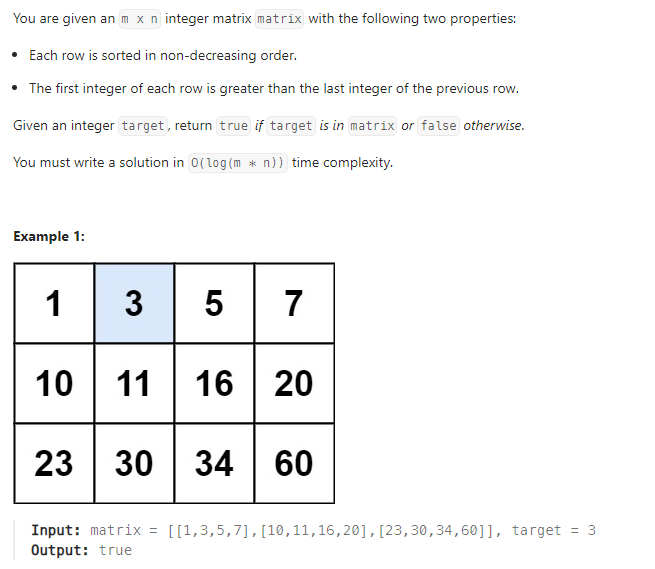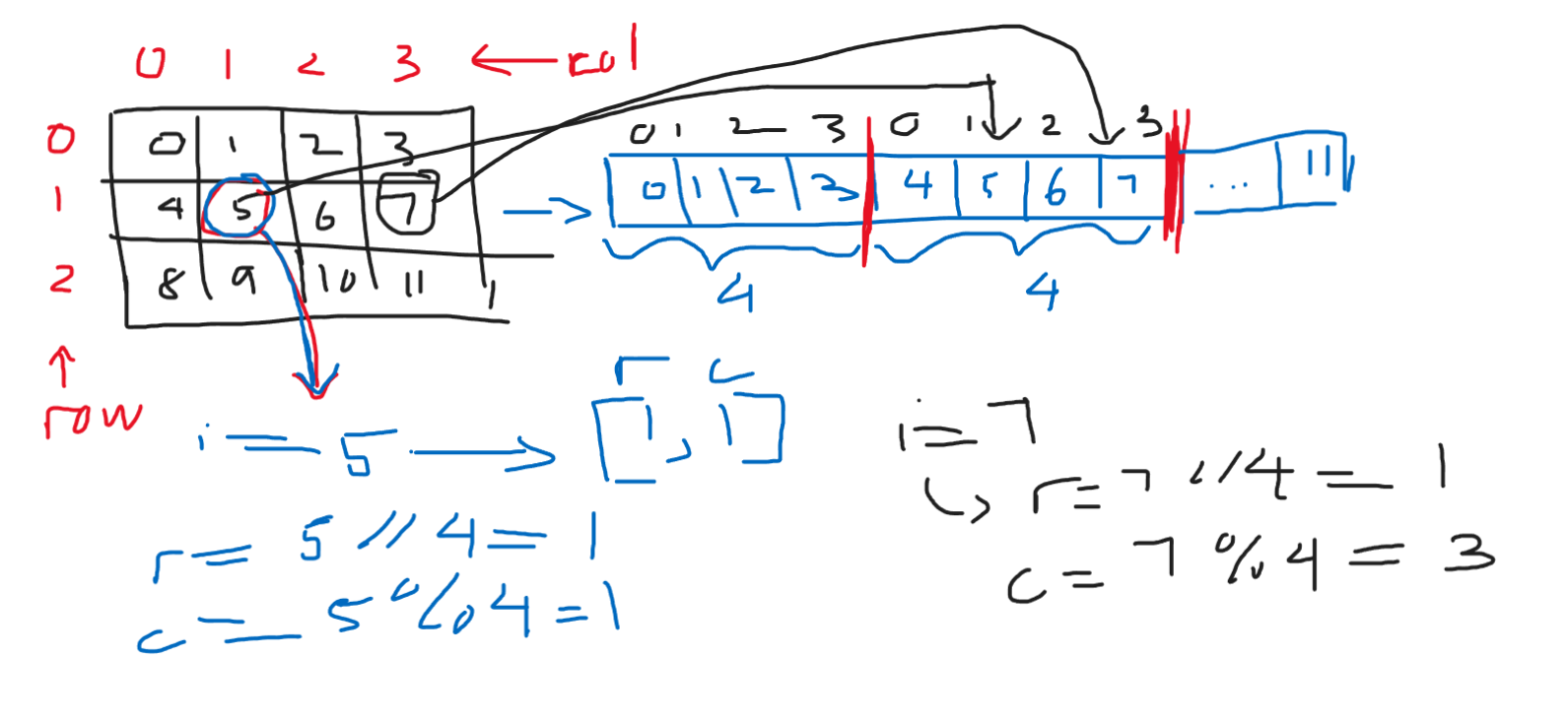Problem of The Day: Search a 2D Matrix
Problem Statement
My Explanation and Approach
In tackling this problem, I opted for a Binary Search approach on the entire matrix, leveraging the fact that the matrix is inherently sorted. This approach allows me to achieve a time complexity of O(log(m * n)), where m is the number of rows and n is the number of columns.
However, applying Binary Search directly to a two-dimensional array can be somewhat challenging. To address this, I devised a method to convert the middle index into row and column values using the following formulas:
row = middle // (number of columns) # floor the result
col = middle % (number of columns)
The insight behind this approach stemmed from visualizing and conceptualizing the matrix as a one-dimensional array. By dividing the entire array into chunks of num_of_cols, these formulas yield the precise row and column indices as if they were present in the original matrix.
This visualization greatly simplifies the application of Binary Search on a two-dimensional structure, allowing for an elegant solution to the problem.
class Solution:
def searchMatrix(self, matrix: List[List[int]], target: int) -> bool:
rows = len(matrix)
cols = len(matrix[0])
left = 0
right = (rows * cols) - 1
while left <= right:
mid = left + (right - left) // 2
row = mid // cols
col = mid % cols
if matrix[row][col] == target:
return True
elif matrix[row][col] < target:
left = mid + 1
else:
right = mid - 1
return False

